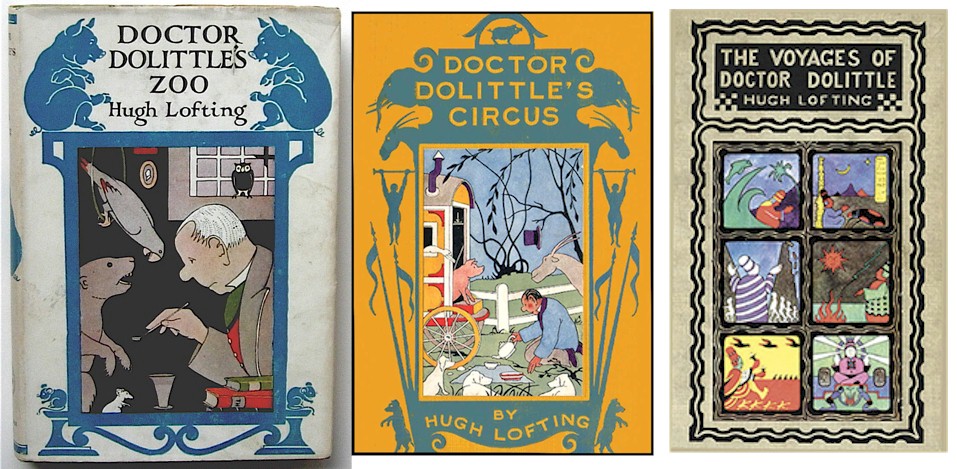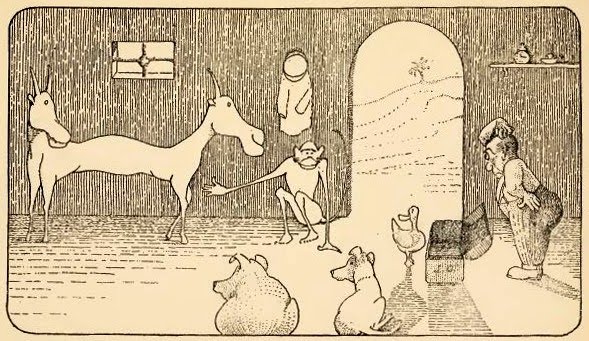
We approached our first meeting without Jacqueline with some trepidation. However, Isabelle is doing a brilliant job of running the group and researching the books and authors.
Group members had rather unclear memories of reading Doctor Dolittle as children. I remember looking through the books on the library shelves, and we had all heard Rex Harrisson singing "Talk to the Animals" from the 1967 film of the book - which used nearby Castle Combe as a location - (even if we hadn't seen the film).

None of us, though, were aware of the details of Hugh Lofting's life, in particular his experiences during WWI. Although he was living in New York when the war broke out, Lofting, as a British subject, went to fight in France and Belgium. The brutality in the trenches (to both men and animals) seems to have been key to Lofting's creation of Doctor Dolittle - a man who shuns human society to live with and tend to the needs of animals. More about Lofting's (rather tragic) biography can be found on the Puddleby website.
Our members had a mixed response to reading the books. Many of us were surprised by the length of the later books, while others found the episodic nature of the stories problematic. However, there was general approval of the cosy world Doctor Dolittle had made for himself on the edge of Puddleby-on-the-Marsh. And there was unanimous praise for Lofting's artworks that illustrate the books.
Having all read different books, from different stages of Lofting's writing career, the group's recommendation to anyone new to Doctor Dolittle is to start (sensibly) with the first book The Story of Doctor Dolittle. This compact story introduces the characters, and guarantees a meeting with the most marvellous of creatures - the pushmi-pullyu.

No comments:
Post a Comment